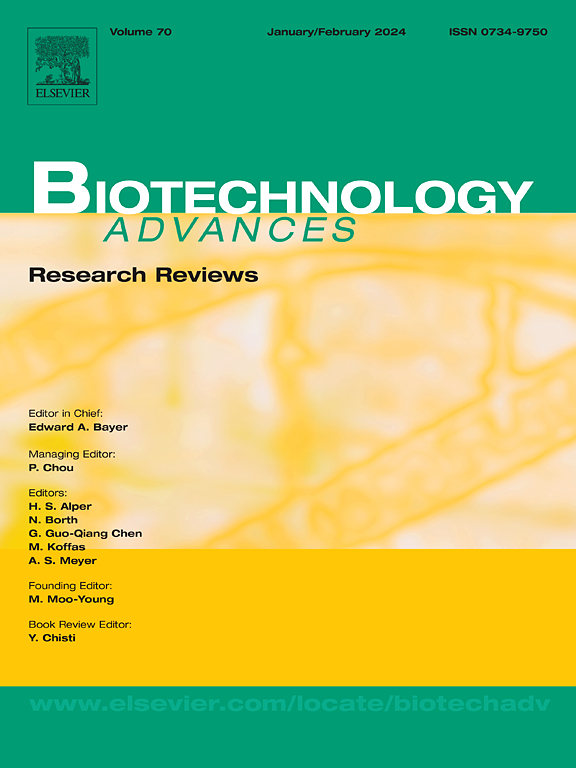多功能抗体的翻译后组装。
IF 12.1
1区 工程技术
Q1 BIOTECHNOLOGY & APPLIED MICROBIOLOGY
引用次数: 0
摘要
多特异性抗体的出现通过参与多个靶点和途径,引入了传统单克隆抗体治疗的显着优势。这篇综述深入研究了多特异性抗体的翻译后组装技术,强调了与化学偶联、寡核苷酸介导的组装和蛋白质-蛋白质相互作用方法相关的创新和挑战。化学偶联方法已经发展到提高组装过程的特异性和灵活性,使瞬时接合和多功能抗体格式。同时,寡核苷酸介导的组装利用了沃森-克里克碱基配对的精度,对抗体的结构和功能取向进行了无与伦比的控制。此外,蛋白质-蛋白质相互作用策略,特别是通过SpyTag/SpyCatcher系统,提供了一种直接组装方法,无需辅助修改,简化了生产过程。本文综述了这些方法在产生具有不同结构和多靶点参与能力的抗体方面的意义,强调了它们在提高治疗疗效和降低生产复杂性方面的潜力。本文章由计算机程序翻译,如有差异,请以英文原文为准。
Post-translational assembly of multi-functional antibody
The advent of multi-specific antibodies has introduced a significant advantage over traditional monoclonal antibody therapeutics by engaging multiple targets and pathways. This review delves into the post-translational assembly techniques for multi-specific antibodies, highlighting the innovations and challenges associated with approaches of chemical conjugation, oligonucleotide-mediated assembly, and protein-protein interactions. Chemical conjugation methods have evolved to enhance the assembly process's specificity and flexibility, enabling transient engagement and versatile antibody formats. Meanwhile, oligonucleotide-mediated assembly leverages the precision of Watson–Crick base pairing, granting unmatched control over the antibody's structure and functional orientation. Additionally, protein-protein interaction strategies, notably through SpyTag/SpyCatcher systems, present a direct assembly approach without necessitating ancillary modifications, streamlining the production process. This review summarizes the significance of these methodologies in generating antibodies with diverse structures and multi-target engagement capabilities, underscoring their potential in improving therapeutic efficacy and reducing production complexity.
求助全文
通过发布文献求助,成功后即可免费获取论文全文。
去求助
来源期刊

Biotechnology advances
工程技术-生物工程与应用微生物
CiteScore
25.50
自引率
2.50%
发文量
167
审稿时长
37 days
期刊介绍:
Biotechnology Advances is a comprehensive review journal that covers all aspects of the multidisciplinary field of biotechnology. The journal focuses on biotechnology principles and their applications in various industries, agriculture, medicine, environmental concerns, and regulatory issues. It publishes authoritative articles that highlight current developments and future trends in the field of biotechnology. The journal invites submissions of manuscripts that are relevant and appropriate. It targets a wide audience, including scientists, engineers, students, instructors, researchers, practitioners, managers, governments, and other stakeholders in the field. Additionally, special issues are published based on selected presentations from recent relevant conferences in collaboration with the organizations hosting those conferences.
 求助内容:
求助内容: 应助结果提醒方式:
应助结果提醒方式:


